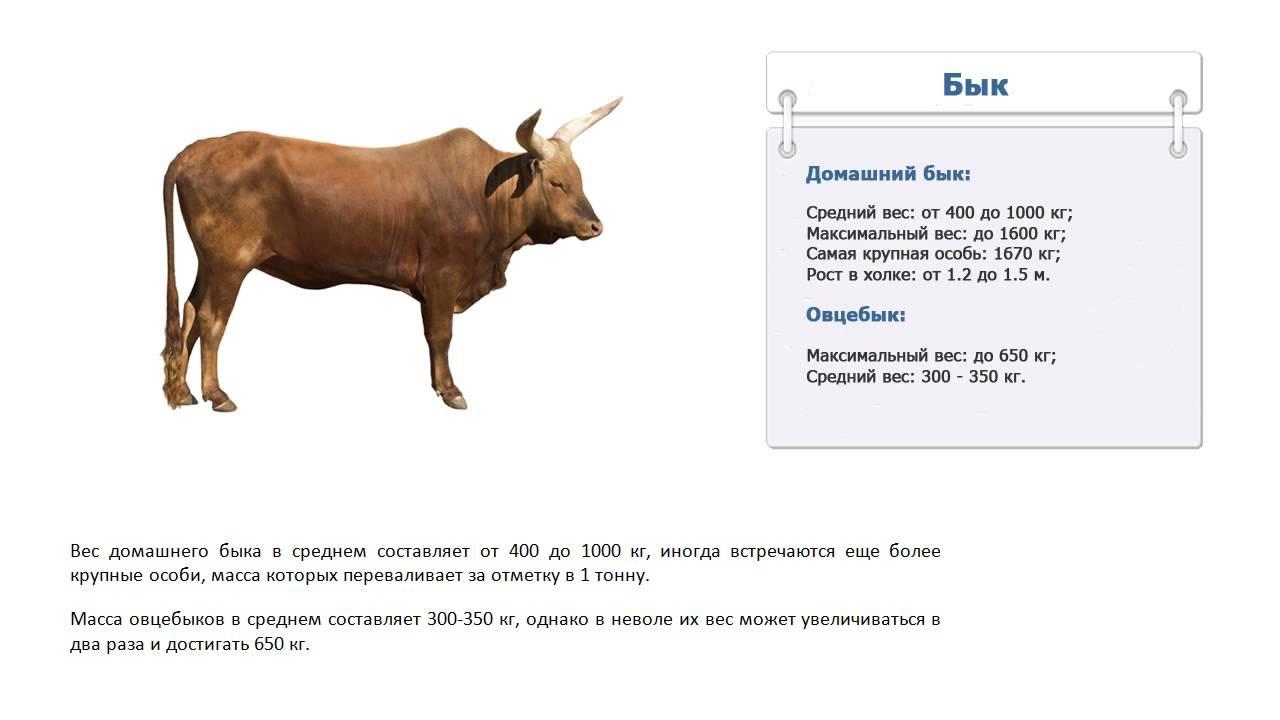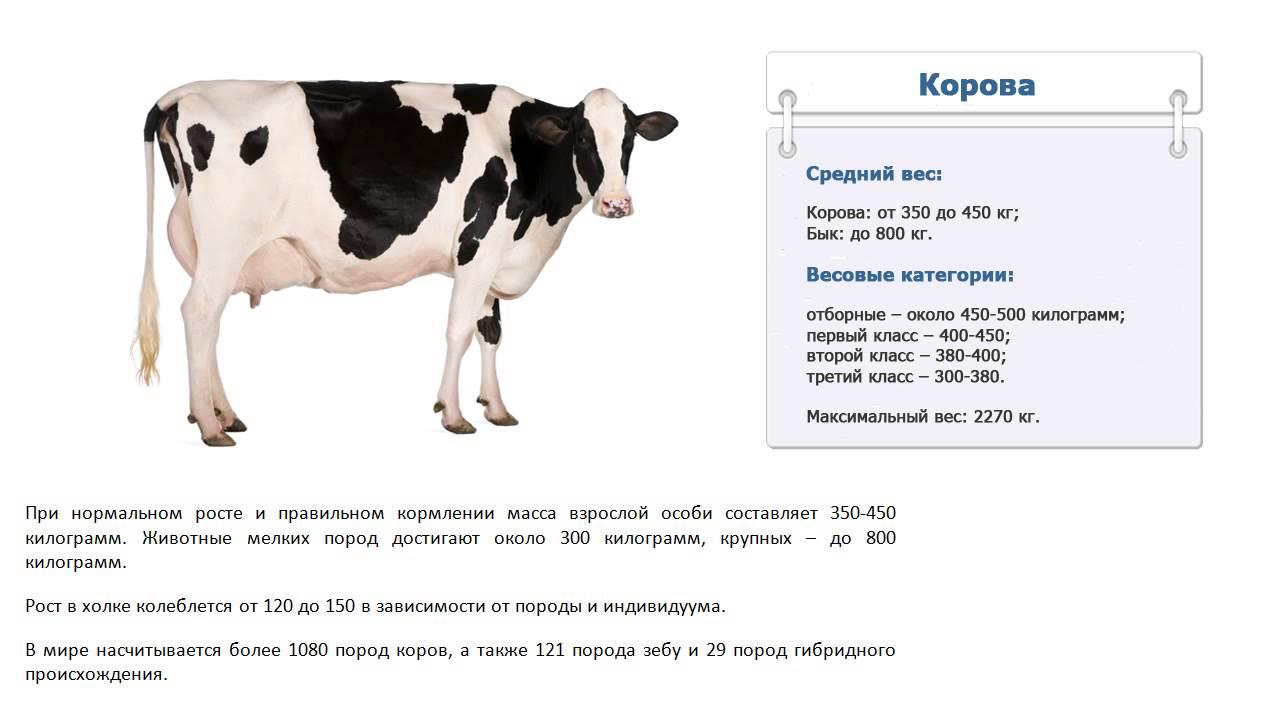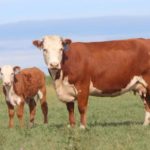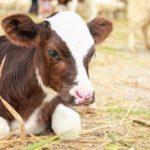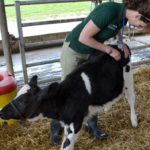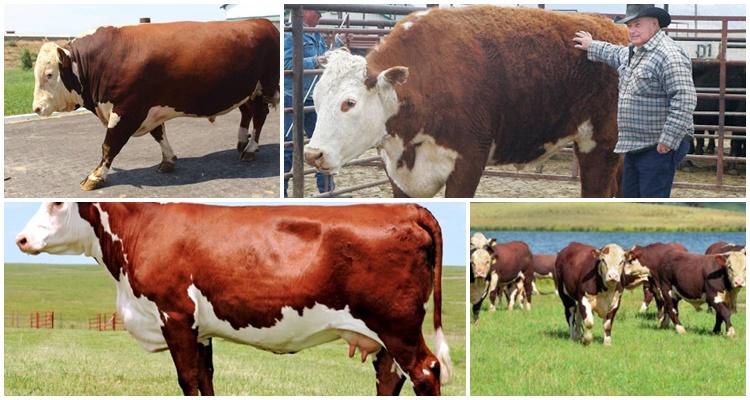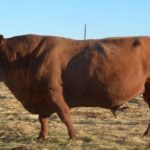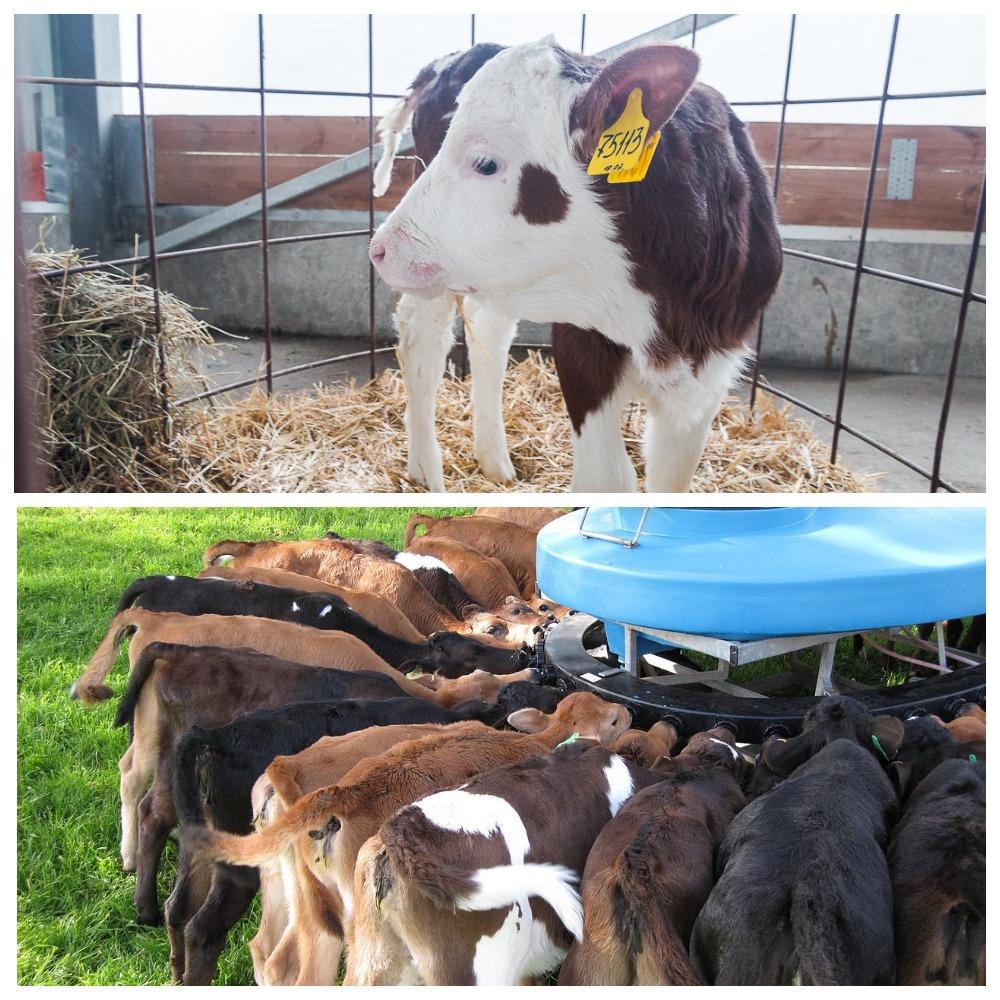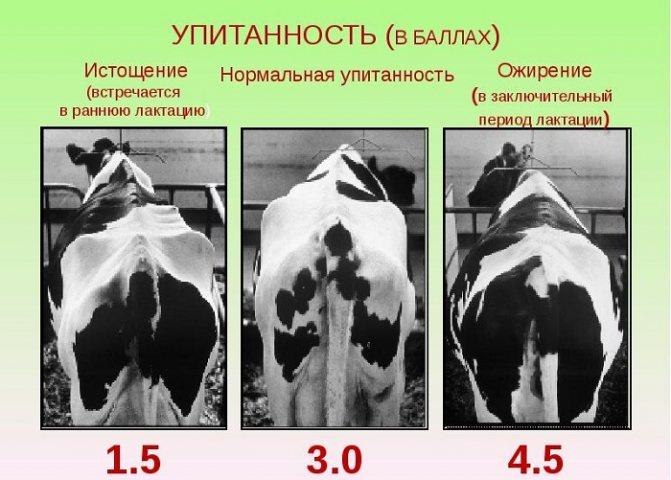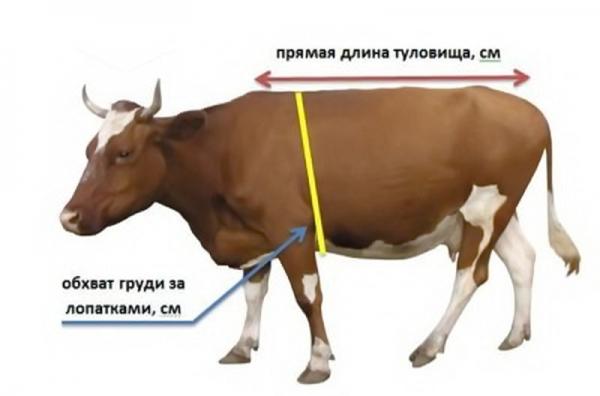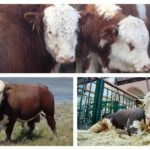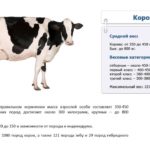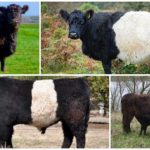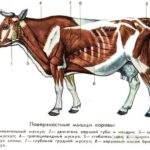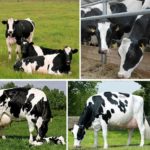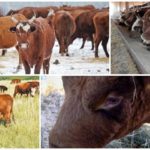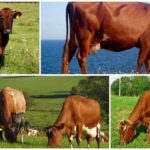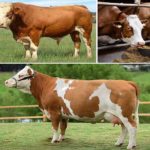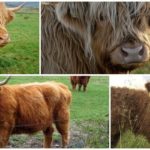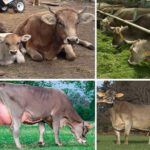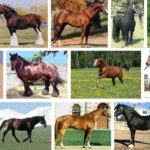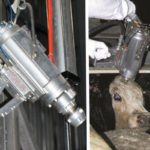Before purchasing livestock, a livestock breeder wants to learn as much as possible about the breed and characteristics of the animal. The weight of cows and bulls is one of the most important criteria by which representatives of cattle varieties are evaluated. Let's consider how much a cow and a bull of different breeds weigh, what is the largest mass of representatives of the species, what it depends on, how to find out the approximate weight of an animal using different methods.
- How much does a cattle weigh on average?
- Bull
- Cow
- Calf
- Categories
- What affects weight?
- Dependence on breed
- Conditions of detention
- Feeding the animals
- How to find out your weight?
- By chest and abdomen circumference
- According to the regression equation
- According to the Klüver-Strauch method
- According to Trukhanovsky's method
- Record bulls
How much does a cattle weigh on average?
The average weight of males, females and calves depends on the breed. Dairy cows weigh much less than meat ones. Information about weight is necessary to create the best diet, calculate doses of medications for treatment, and so on.
Bull
Adult male cattle weigh more than females.
| Animal age | Body mass |
| 1 year | 300-350 kg |
| 3 years | from 450 kg |
| From 5 years | from 650-850 kg |
However, the breed affects the weight values. A breeding beef bull can weigh a maximum of 1100 kg. The yield of clean meat also depends on the breed, but on average it is 55-60%.
Cow
The fatness of females depends on age, breed and even the stage of lactation. Females older than 5 years and representatives of the meat breed are always larger, with greater live weight, than young and dairy ones. The weight of animals must correspond to the norms for age and breed.
| Animal age | Body mass |
| 1 year | 200 kg |
| 3 years | from 300 kg |
| From 5 years | from 400-500 kg |
Calf
The weight of a baby varies greatly from birth to one year, but also depends on the breed variety and its gender. They can gain 0.5-1.8 kg per day. Weight gain increases up to 10 months, then remains at a constant level. The weight of a one-year-old bull is more than 400 kg.
| Calf age | Weight |
| Newborn | 30-40 kg |
| 1 month | 50 kg |
| 6-8 months | 100-180 kg (heifers), 200-210 kg (calves) |
| 10 months | 200-350 kg |
| 1 year | 400-450 kg |
Categories
In addition to average weight, there are 4 categories: the best selected, 1st, 2nd and 3rd grade. Basically, this is a characteristic of beef cattle, where you can clearly see how much the animal gains during fattening.
| Categories | Bulls weight |
| Average weight | 600-850 kg |
| Selective | from 500 kg |
| 1st grade | 400-500 kg |
| 2nd grade | 350-450 kg |
| 3rd grade | up to 300 kg |
Beef cows are heavier than dairy cows; between them there are representatives of the meat and dairy sector.
What affects weight?
In addition to gender and age, the weight that an animal will have is influenced by the breed, food and conditions in which the livestock is kept. Weight can vary widely.
Dependence on breed
Representatives of any breed must correspond in weight to the characteristics of their variety. The breed standard also determines the weight of livestock. Meat animals have the largest mass, as they have powerful muscle mass. Dairy milk does not have such muscles; they spend nutrients to produce milk. Meat and dairy cows are universal in this regard, from which both meat and milk can be obtained.
Conditions of detention
Certain conditions contribute to the accumulation of body weight in cows. For example, it is not recommended for beef cattle to be grazed and walked for long periods of time, so that they do not waste energy in vain. How a cow will grow and develop also depends on the temperature and microclimatic conditions of its detention. The barn should not be too cold so that the animals do not waste energy on heating; it should not be damp, dark, or drafts. All this requires cows to expend energy to maintain body temperature and the body’s defenses.
To get as much meat as you need, you need to keep cattle in spacious, ventilated rooms, in clean stalls covered with straw. The litter must be cleaned every day and the manure must be removed.Removing manure makes the air clean, and animals do not suffer from respiratory pathologies. We can't help but talk about infections. Sick individuals lose weight, quickly shedding accumulated kilograms, which, of course, affects their weight.
The same applies to other diseases, for example, metabolic diseases, digestive tract diseases, postpartum complications.
The mental state of the animals also matters; calm, happy cows grow and gain weight quickly. This is facilitated not only by good nutrition and care, but also by walks in the fresh air, where animals breathe air and bask in the sun.
Feeding the animals
The diet of cattle must be complete, rich in nutrients, and the animals must be fed according to a schedule. It should contain succulent feed (fresh grass, vegetables and root vegetables, silage in winter), roughage (fresh hay and clean straw), concentrates (grain and grain waste), vitamins and mineral impurities. You can feed them with mixed feed and feed mixtures, in which all the components are selected correctly and in the required concentrations. On mixed feed, cows grow quickly and eat it with pleasure, which is reflected in the desired muscle growth. The only drawback of this growing method is the high price of feed.
In order for the weight of animals to increase in accordance with the norms specific to the breed, cattle must be fed correctly. Cows should receive enough feed to cover their physiological needs and still have enough for growth. Only in this case will the expected weight correspond to the breed characteristics.
Feeding regimen: for calves – up to 5 times, for adults – 2-3 times a day.If it is violated in the direction of reducing the frequency of feeding, animals do not receive enough nutrients and gradually lose weight.
How to find out your weight?
When purchasing livestock, you can find out their approximate weight without weighing them on a scale. Weight information can tell you a lot about an animal. For example, if a calf or an adult animal does not reach the norm in weight, this may indicate that it is weakened or sick. Buying such an individual is risky, since it will not grow and develop correctly; keeping and feeding such a cow will not be economically profitable.
Various methods are used for measurement. For each of them you only need a measuring tape. Errors in calculations of 20-30 kg are allowed. Cows can be weighed at any time, and calves can be weighed every 2 weeks to monitor how they are growing.
By chest and abdomen circumference
Place the ribbon on the cow's back, wrapping around the chest behind the shoulder blades and front legs. You need to tighten the tape moderately so that it does not sag, but is not too tight. Then they measure the circumference of the abdomen along its most protruding part. Weight is calculated using a simple formula: (A + B): 2 + 50, where A is the 1st measurement, B is the 2nd measurement.
According to the regression equation
The only measurement here is chest circumference. Its value must be substituted into this formula:
- 5.3 x A - 507, where A is the animal’s chest circumference 170-180 cm;
- 5.3 x A - 486 - girth 180-190 cm;
- 5.3 x A - 465 - girth more than 191 cm.
The chest is measured in the same way as in the previous example.
According to the Klüver-Strauch method
The method is recognized as one of the most accurate. For calculations you will need measurements of the chest and oblique body length. It is measured by stretching a tape from the protruding hip joints to the protruding point of the sternum.The measurements are added up and 50 is subtracted from the resulting number.
According to Trukhanovsky's method
The difference between this method and the previous one is that the values are not added and subtracted, but multiplied and then divided by 50.
Record bulls
The heaviest bull had a weight of 1740 kg, weight at the withers - 1.9 m. He lived in Switzerland and belonged to the porcelain breed. In England there is a male Charolais breed that weighs a little less - 1700 kg. The bulls, named Chili and Fresian Trigger, weigh 1.3 and 1.2 tons respectively. Their height matches their weight - 1.9 m.
There are also record holders among the cows. The leader is considered a cross between Holstein and Durchman breeds weighing 2270 kg. Her measurements are height at the withers 1.88 m, chest girth 3 m 96 cm. This cow lived in the 1st half of the 20th century, and the modern record holder weighs more than a ton and has grown to 1.83 cm at the withers.
The weight of bulls and cows in livestock production is of great importance, especially for breeds raised for meat. If the weight of livestock meets the standards, it is healthy and productive. If not, this may indicate illness or poor care. Weight can be approximately determined using formulas specially developed for calculating it in domestic cattle. This is necessary for the livestock breeder to properly organize the feeding and care of cows.

